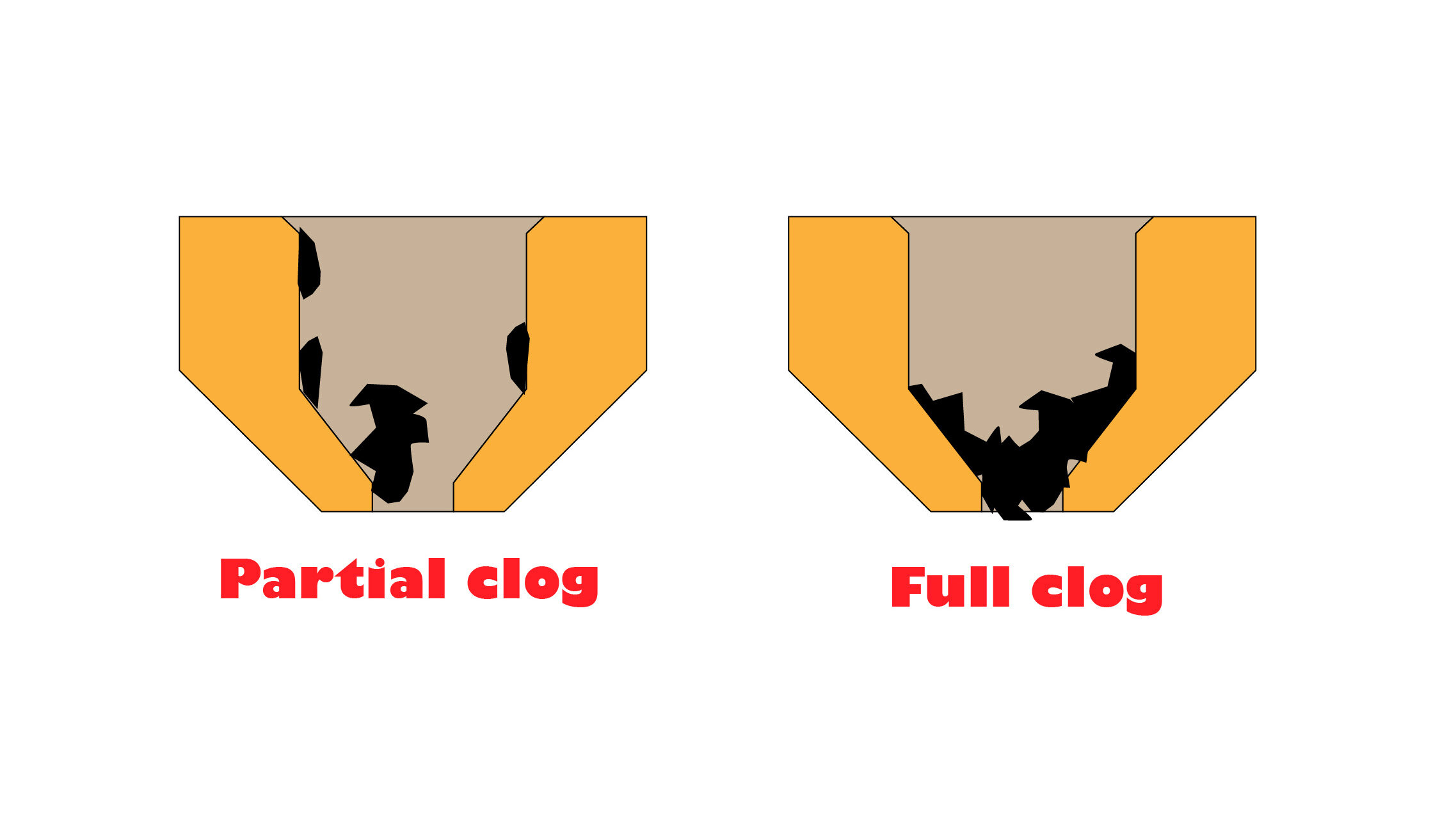How to avoid clogs in 3D Printer nozzles
3D printer nozzles can easily become clogged, which cause your prints to fail or affect the quality.
Fortunately, there are a few simple steps you can take to avoid nozzle clogs and keep your 3D printer running smoothly.
In this article, we'll take a look at some of the most effective ways to prevent nozzle clogs in a 3D printer. If you already have a clog you want to read this article instead.
Use a Filament filter
An effective way to prevent nozzle clogs is to use a filter on the filament. A filter is a small device that attaches to the filament before the extruder and catches any debris or dust that may be present on the filament.
This can help to prevent these contaminants from reaching the nozzle and causing a clog.
You can download this filter and print yourself and just snap onto a loaded filament spool.
Use a high-quality filament
Low-quality filament is more likely to contain impurities and debris that can clog the nozzle, so it's best to use filament from reputable manufacturers that is known to be clean and free of contaminants.
Use the right temperature settings
The temperature of the nozzle plays a big role in preventing clogs, as too high of a temperature can cause some filament to harden and clog the nozzle. Make sure you are using the recommended temperature settings for your printer and the type of filament you are using to ensure the best results.
Try to avoid leaving your printer heating without printing. As long exposures to high temperatures may harden some filament.
Avoid using flexible or abrasive filaments
Some types of filament, such as flexible or abrasive materials, are more likely to cause nozzle clogs than others. If possible, avoid using these types of filament or be prepared to clean the nozzle more frequently when using them.
Keep the nozzle clean
Regularly cleaning the nozzle can help to prevent clogs by removing any debris or hardened filament that may be accumulating inside. You can use a nozzle cleaning tool to carefully remove any debris from inside and outside the nozzle on a regular basis.
Preventative Maintenance
In addition to cleaning the nozzle, it's also important to regularly check and clean the extruder, as this is where the filament is fed into the printer. Over time, the extruder gears can become clogged with debris or filament as well, which can prevent the filament from feeding properly and cause nozzle clog symptoms.
Nozzle clogs are a common problem with 3D printers, but they can be easily avoided with a few simple steps. By using high-quality filament, keeping the nozzle and extruder clean, using the right temperature settings, avoiding flexible or abrasive filaments, and using a filter on the filament, you can prevent nozzle clogs and keep your 3D Printer in great shape.
Additional articles that may help you 3D Print better
How to get transparent 3D Prints





